1er
BEP, Dien Bien Phu 1954
Rolling
Thunder French Indochina war
studies for re-enactors
The
newly formed Indochina Living
History section of Rolling
Thunder have done some photo
shoots with a view to writing some
uniform studies.
As we are only a few, I had to
draft some collector friends from other
societies to help in the photo
shoots.
The
French paratroopers in Indochina
were the post-WWII elite forces
of the French army. They were
used as firemen for the
Indochinese theatre and wherever
a situation needed sorting out, they
were engaged.
As Elite troops,
their uniform was always quite
distinctive from the other
French troops and evolved
quickly
during the war. French paratrooper uniforms worn
during that famous battle were
quite varied
but helped us to
identify the unit represented.
|
Rolling
Thunder, the
Vietnam
Experience
gives you the
full Vietnam
experience by
bringing
you
the 1st
Indochina
war.
Photos taken at Military
Odyssey 2016,
Kent, UK
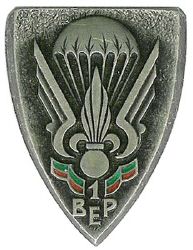
1er
Bataillon
Etranger de
Parachutistes,
1er BEP
1er
BEP was
created on 1
July 1948 in
Algeria,
arrived in
Indochina on
the 12
November
1948
and fought
mainly in the
Tonkin region
(North
Vietnam).
Dien Bien Phu
On
the 21st November 1953 during
Operation Castor, the unit was
dropped as part of the second
wave of French troops into the
area around Dien Bien Phu. The
objective was to secure a
WWII-era landing strip to later
construct a fighting camp
to draw the Viet Minh into
another pitched battle against a
well-defended position.
The
operation was completed without
incident with the battalion
digging in around Dien Bien Phu
in late November 1953. During
the Battle of Dien Bien
Phu, the
battalion was divided into
mobile fire-brigades, with the
primary focus being the Huguette
forts, specifically Huguette 5.
The 1er CEPML* was stationed at
Dominique 2 until the 14th of
March, 1954, at which point it
was shifted to various locations
in the fort. Despite furious
resistance, the 1st BEP was
destroyed for a second time on
May 7, 1954 with the final fall
of the outpost. The unit lost
316 men killed in action over
the course of the siege, not
including those who subsequently
died in captivity in Indochina.
*
1er CEPML:
1re
Compagnie étrangère
parachutiste
de mortiers
lourds (1st
Foreign
Parachute
Heavy Mortar
Company)
This was an
heavy mortar
parachute
combat company
combat
administratively
attached to
the 1st
Foreign
Parachute
Battalion.
1st
BEP, Dien Bien Phu Feb/March
1954
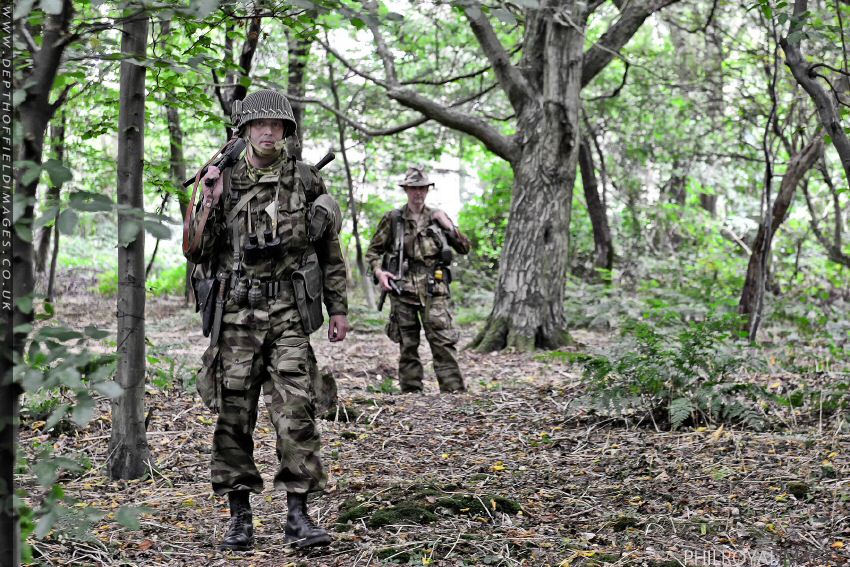
Setting
the scene
February 1954, an
officer and NCO of the 1st
Foreign Parachute Battalion (1er
BEP) walking back from a patrol
north east of Dien Bien Phu.
Looking at the way they hold
their weapons, they must be
within the French held
perimeter.
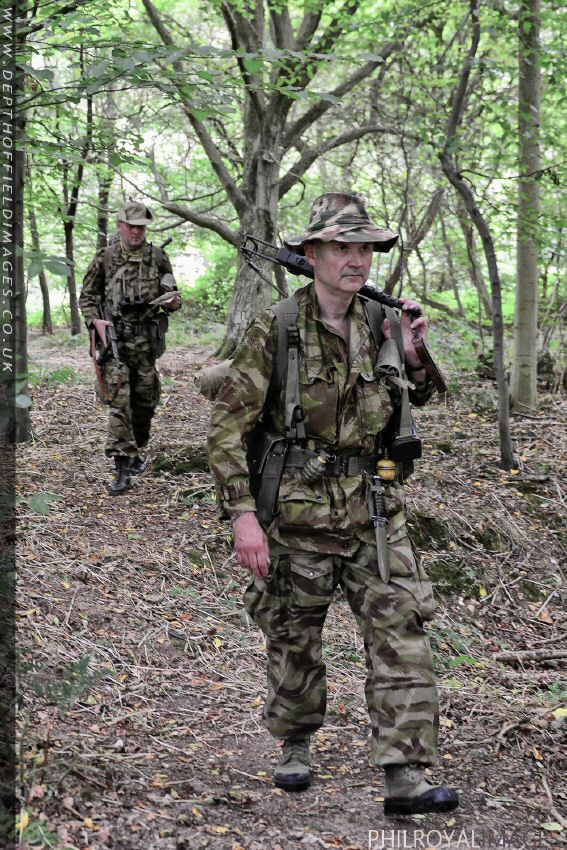
Our
two men taking 5
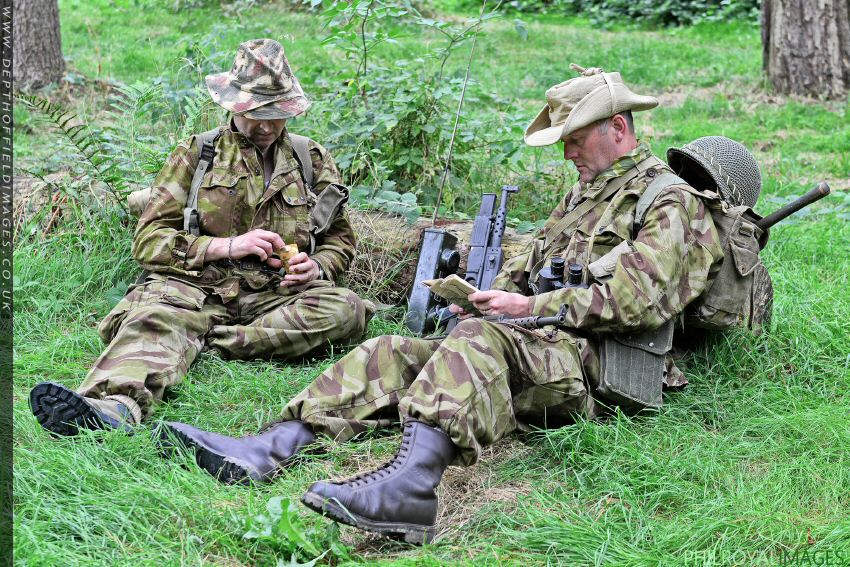
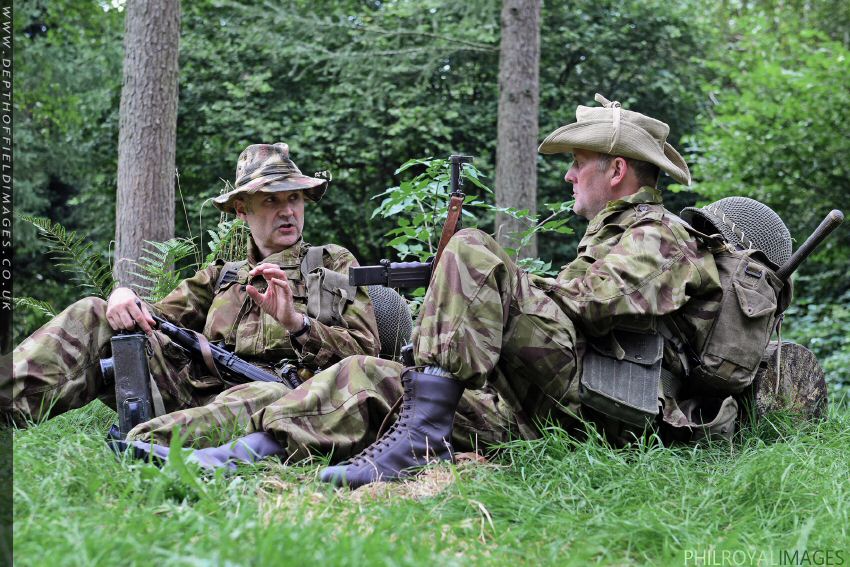
PITON
781/HILL 781
Morning
of the 5th March 1954, an
officer and NCO of the 1st
Foreign Parachute Battalion (1er
BEP) are observing the foot
of
hill 781, which they will
shortly assault to root out the Viet
Minh and to try to release
pressure north east of Dien Bien
Phu.
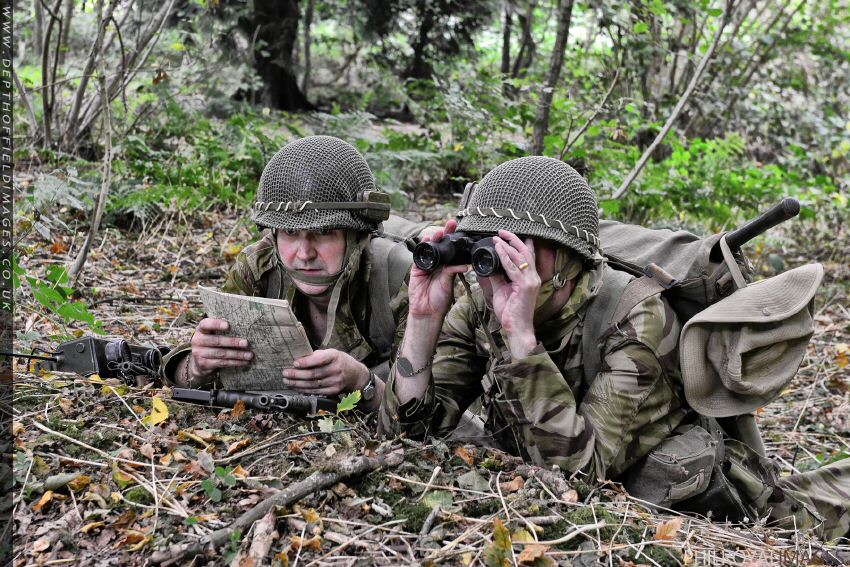
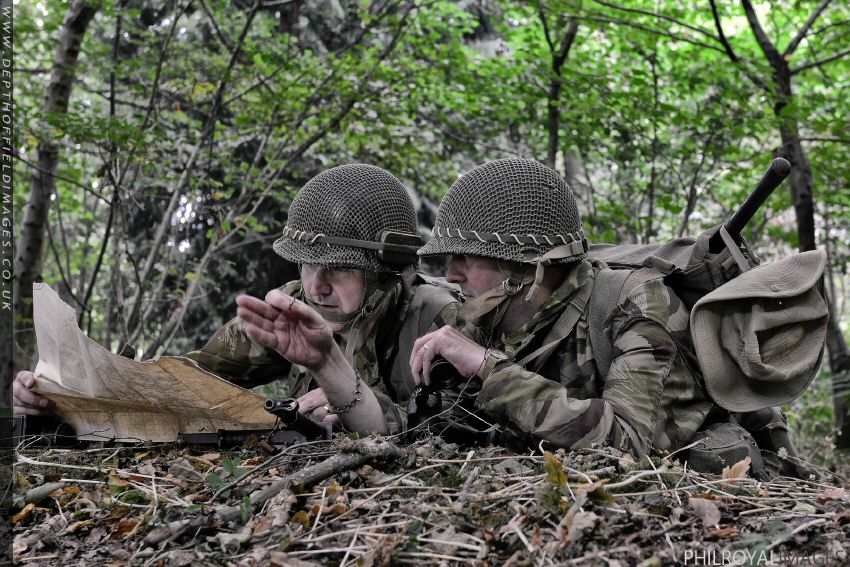
Also a big thank
you to two
friends of mine:
Greg,
from www.modernforces.com
for taking the
role of the
officer
and to Phil
Royal from www.depthoffieldimages.co.uk
for his hard
work during the
photo shoot.
2016 Military
Odyssey, UK.
|
***
This
uniform study is of the 1st Foreign Legion paratrooper
battalion,
which wore the French
TAP 47/52 uniform
and mainly
French equipment during the DBP
battle.
Uniform
& Equipment description
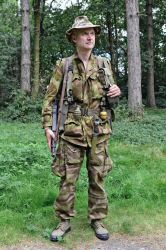
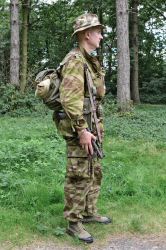
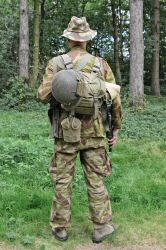
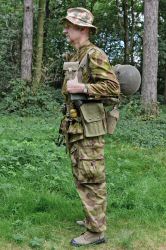
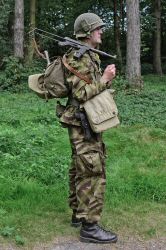
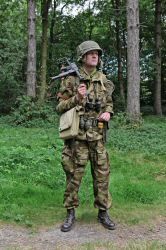
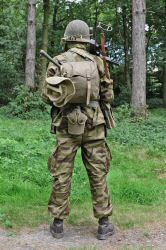
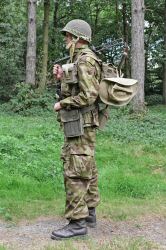
French
M49 Bush Hat
The most
characteristic head gear in
Indochina and worn by virtually
every soldier of
the "Corps
Expéditionnaire Français en
Extrême-Orient" (CEFEO).
.jpg)
Locally-made
with the large chrome popper
Green French issue
Khaki/sand French issue
Most
of the hats used in Indochina
were locally made as the French
Army only approved the hat in
1949. The
military supplied mainly two different
coloured hats - in varoius shade
of sand/beige and Kaki.
Some
were also manufactured locally, which are easily
recognisable by the much thinner
material used and the large chrome popper
on the side of the hat to hold
up the brim. The one on
the left in the photo below has
been camouflaged. This was
common
practice during the latter part
of the war as no specific camo
headgear was officially
available to match the camo
uniforms or to fulfill
the need for camouflage.
The camouflage was hand
painted by the owners with whatever paint they could scrounge
( generally vehicle OD green and brown).
The pattern was individualised,
but mainly followed three
patterns, round blotches to imitate the
WWII US camo, block to imitate
the British SAS camo and of
course stripes for the French
lizard camouflage.
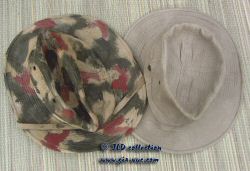
Re-enactors notes: M49 bush hat
are easily
obtainable via the internet but
proceed with caution
as some reproductions are
being made
and sold for the same
price as originals.
Most of them distributed by the
French army in Indochina were of
the kaki colour, but faded to a
sandy type colour very quickly.
Further more the majority used
in Indo were the locally made
one which were of a light shade
of kaki, so using the sand
colour type is ok. The hats with
an adjustable neck strap with a metal
buckle are post Indochina circa
59.
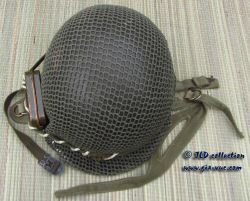
Helmet:
The French Para helmet was
WWII US M1c or the M1 with a
modified liner which had received the TAP/EO Airborne
Indochina modification.
The camo
net was the US WWII
M43 net with its
foliage band. On the photo
above, the band holds a US
WWII Carlisle dressing which was
much preferred due to water
resistance.
The white
cord looped around the foliage
band is a piece of parachute
suspension cord which was used
to secure the helmet
to the webbing during
parachute jumps.
In fact the
TAP/EO modification were not
that strong and sometimes broke
during parachute jumps resulting
with the loss of the
helmet. With the cord, the helmet would
stay suspended to the webbing
to be retrieved once on the
ground.
Re-enactors
notes: genuine war time TAP/EO converted
helmets are extremely rare and command very high
prices. Conversion kits and converted
post war M1 helmets are available
from specialised dealers.
Genuine nets are a little more
difficult to obtain but repro
are available. Genuine
bandages are very common.
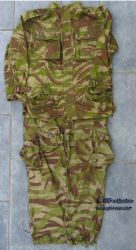
The jacket
and trousers:
These are of the newly
designed airborne pattern TAP
47/52 . This uniform was
inspired by the British para
Denison Smock. The jacket was
cut very generously and had a
beaver tale to be fasten forward
during jumps. The trousers had some very distinctive but
useless pockets on the front of
the legs. Of course once laying
down those pockets were no
longer accessible and the
contents used to dig into your leg
and groin, so these were dropped on
the 47/53 version which was not
distributed in Indochina.
These
uniforms are extremely rare now
and command very high
prices whenever they come up
for auction.
Re-enactors notes: luckily
fairly good reproductions have
been available for re-enactors and even collectors. As
far as I am aware, there have
been four different versions
available in the past.
Unfortunately none are 100% accurate.
What
Price Glory, US manufacturer:
very high quality reproductions
with, unfortunately, a major flaw
in the camouflage. The green has
been printed on the brown, which
is unfortunate as the brown was
printed on top of the green on
the original 47/52 uniform. Apart from that the rest is very
close to the original, except
for the poppers which are much
too flat.
The original ones
were domed. A lot of
sizes are available, but they only do
limited runs, so the uniform is
not always available.
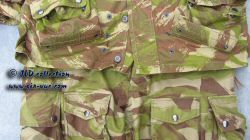
Jacket from Panzerfaust,
trousers from Thailand (similar
to WPG)
Another
US manufacturer also made some
in small quantities. I have very
little information on them but I
understand that they are not
that accurate, ie some of the
pocket flaps are the wrong
shape but the print is correct,
brown over green.
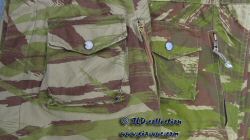
Trousers
on the left from Thailand
(similar to WPG) and on the
right from Panzerfaust
Panzerfaust
from Hong Kong also made some
fairly accurate copies, but
again not perfect. This time the print
is right, the
poppers are better but not
perfect, but unfortunately they
used thinner cloth making the
uniform a lot lighter and of a
different feel to the
original. Also, the buckles do not match
what I have seen on the original
47/52.
Lots of
different sizes available but,
again, limited runs, so not
always available.
A
manufacturer from Thailand also
released some uniforms in Europe
and the US in the very early
2000. These were very similar to
the What Price Glory uniforms
with the incorrect print on the
correct cloth. They were only
available in two sizes - small
to medium and large to extra
large.
They
also made a Bigeard cap and a
bush hat in the same camo.
They are no longer produced.
So,
unfortunately, no perfect copies!
Detailed photos
_tm.jpg)
Genuine
M47/52 trousers
_tm.jpg)
From left to right:
Genuine, Thailand/WPG,
Panzerfaust
_tm.jpg) _tm.jpg) _tm.jpg)
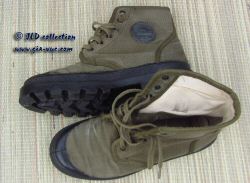
The
boots:
French military jungle boots
"Pataugas" officially started to appear in small numbers around 1948, prior and post that time, soldiers had to rely on civilian or locally made ones. They were light and quick drying and paras often wore them instead of their leather jump boots.
The "Pataugas" is also another characteristic item worn by many soldiers in Indochina from 1950 onwards. The first one issued were from the famous "Bata" brand, but the manufacturing was soon sub contracted to many other manufacturers to fulfill the demand
Detailed
photos
"BONUSAGE"
brand genuine 50's issue
Pataugass
_tm.jpg) _tm.jpg) _tm.jpg)
Re-enactors
notes: The same pattern was
produced and used by the French
army well into the 1980s so later
models are not that difficult to
obtain. Miltec, a modern
manufacturer, does a copy
which
unfortunately includes their name on
the black rubber ankle re-enforcement
which is a real giveaway. Beware,
the French army had some post
war Pataugas made with a green
rubber sole and others with a
buckle gaiter section added
(similar to the Rangers).
These
are no good for
Indochina or Algeria.
TAP
Jump boots
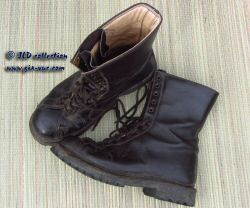
The
French released their own jump
boots in 1950, then a slightly
modified version in 1953.
Detailed photos
_tm.jpg)
_tm.jpg)
Italian copies on the left
and genuine M50/53 jump boots on
the right.
_tm.jpg)
_tm.jpg)
_tm.jpg)
Genuine M50/53 jump boots on
the left and Italian copies on the
right (shiny smooth dark
brown leather)
Re-enactors
notes: these French M50/53 jump
boots are
very rare and expensive to
purchase. For a long time it
has been acceptable for
re-enactors to wear the Italian
para boots which, from the front,
resemble the French model.
The sole and the rear of the
boots are slightly different as
well as the leather used.
What Price
Glory are making very good
reproduction boots to order. The only
difference is they use of a
Vibram sole.
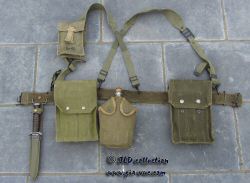
Equipment:
The
1st BEP at DBP was mainly
equipped with the new TAP 50 and
50/53 French made equipment.
On the photo above
TAP 50/53 suspenders
with a TAP 50 belt, TAP 50/53
MAT
49 ammo
pouches, TAP first aid pouch
secured to the webbing and the TTA
M47 water
bottle.
Point to notice is the
US equipment wire clip used to
secure the water bottle to the
belt.
The fighting knife was
often carried by the French on
the front of their belt and is
the US M3 fighting knife.
On his
back is the TAP 51 musette/haversack
with French M35 light khaki shelter-half
rolled under the flap.
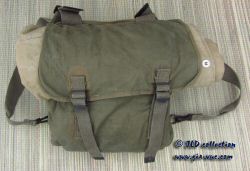
Re-enactors
notes: M50/53 web belt are easy and
cheap to get but were only used
in very small quantity from around late 53
onwards by some Para units. So better
be avoided.
The M50 belt is the one to get,
but is rare.
From the late 50's some M50
belts were manufactured in
Europe or locally for
"Regimental
foyer" which can be
recognised
by the flat metal belt
loop instead of the rounded
type used on the original
Army issue belt. They are a lot
less desirable.
Buyers must be aware that fake
M50 belts have been made from
the French M50/53 belt webbing
with 50's
British web belt buckle
and the flat belt loop.
The M36 US WWII web belt would
still have been common with the
1er BEP.
The rest of the equipment can be
easily obtained via the
internet, except for the TAP musette
which is rarer,
but can be
substituted for a WWII US Para
repro one. A genuine M3
knives are expensive, but repros do exist.
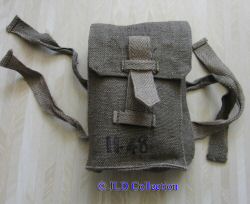
Pochette
à pansements type II/48
The canvass 1st aid pouch II /
48 is often associated to the
TAP50 (troupes aéroportée)
equipment but is
actually
a TTA (troupe toute armes)
piece of equipment. I am not
sure as when this appear in
Indochina but I believe they
started to be issued with the
TAP50 canvas equipment circa
1951 onward.
The pouch is made of khaki
canvas and closed by a lighter
colour canvas thin strap The
back of the pouch has two
canvas straps to allow it to
be secured to your belt, your
webbing suspension straps or
even to your ankle.
The lower front of the pouch
has a white ink stamped with
II/48, which indicate the
pouch Theoretical content set
in 1948.
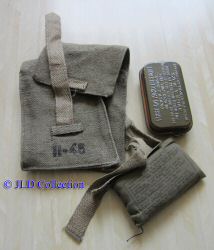
With
the pouch is showed a Carlisle
US WWII dressing and a
French M49 dressing
Theoretical
content:
-
1 tube of quinine tablets at
0.20 gr. ;
- 1 tube of parenetic tablets
at 0.50 gr. ;
- 1 tube of sodium chloride
tablets to 1 gr. ;
- 1 package of antiseptic
adhesive dressings;
- 1 individual dressing model
1949 in a canvas envelope;
- small wound adhesive
dressings in a paper pouch;
- 1 small syringe of morphine
placed in a cardboard box.
The
parts are housed in a
transparent plastic bag inside
the pouch
***The
1st Aid pouch marked with
II/48 is the "only French
made" correct one for
Indo/Algeria.****
The content was revised and
changed in 1985, from them
they were issued with II/85
markings,
old pouch would have been
emptied and refilled with the
new content listed in
1985,
with the original II/48
marking painted over and new
stamp II/85 applied,
this of course are not
correct for the Indochina war.
Also
worth knowing is that the
Indochina issue pouch had
their markings done in
white,
most of them you will find
will have the white marking
II-48 been remarked with a black
ink stamp/stencil or just a black
pen,
I have no idea when all
these pouches where
remarked, late Indochina or
Algeria?
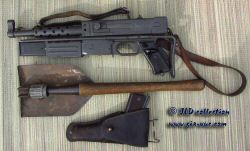
The
weapon:
The
MAT 49, iconic weapons of the
French army started to appear in
Indochina during 1950.
The 9mm
MAT
49 smg was an excellent weapon for close
combat with a 32 round mag which
folds
under for transport.
In the photo above is also a US WWII entrenching tool and a
Colt 45 in a Vietnamese made
holster.
Below, a US MKII pineapple
grenade, French OF37 and DF37
grenades.
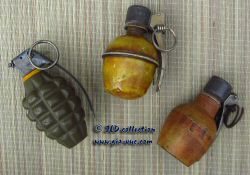
Re-enactors
notes:
MAT
49 and OF/DF37 are
rare and difficult to obtain
here in the UK.
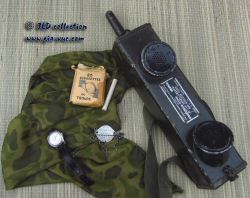
The
radio:
WWII US BC-611 radio
(SCR-536) with a
range of
1-3 miles, the lesser for
Indochina terrain.
Re-enactors notes: rare radio to
obtain.
You
can also see in the photo a scarf
made of WWII US parachute silk
(beware, do not use the Vietnam Ripstop
type),
a cigarette pack, dog tag and
50's civilian watch.
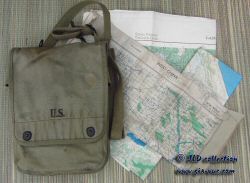
Map
Case:
Standard WWII US Army
map case with genuine Indochina
maps
Re-enactors notes: maps are a little
more difficult to obtain than a genuine issue map case,
which are
to be preferred to repro ones.
Locally-made as well as German and
British map cases were also used.
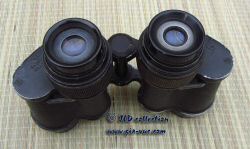
Binoculars:
French issue 8x30 M51.
Those used in the photo shoot were
1944 Canadian ones.
WWII British,
US and German ones were also used in
Indochina
Please
note the equipment and uniforms
described here are time specific for
the 1st BEP.
For
instance,
they would have worn totally
different uniforms and equipment
during
the RC4 fighting in 1950.
***
Here is the list of our requirements
for that specific photoshoot.
Helmet
US M1C or M1 modified TAP
French
M49 jungle bush hat
US
1944 pattern camo net with or
without band
M47/52
TAP uniform
French
M50 - M50/53 jump boots (Italian
para boots) or Pataugas (jungle
boots)
Equipment
M50
TAP or M36 US belt (M53 TAP belt
can be used by a few members as
they started appearing)
TAP
M50/53 suspenders or US M1936
French
M47 or US WWII M1910
water bottle
MAT
49 and TAP
ammo pouches,
or
M1 carbine with US M1 twin cell
pouch, or French M50, or M50/53
riffle ammo pouch.
(Note: a few 30-round mags were seen with the
1st BEP, probably carried in US
WWII ammo bags or Sten gun
pouches),
or
M1 carbine with folding stock
with twin cell M1 pouch, or
French M50 or M50/51 rifle ammo
pouch
TAP
M50 or US M36 Para musette bag
US
WWII entrenching tool
US
WWII machete
WWII
parachute silk scarf ,
camo or white (NOT
RIPSTOP)
TAP
1st aid pouch
French
or US WWII Carlisle field dressing (in
metal can)
M3
fighting knife
OF
and DF French grenade, or US Pineapple
grenade
TAP50
holster, or US or M48 French
leather holster
French
or US M32 medic pouch
PRC10,
SRC536, BC-1000 radio
M51
French binoculars or WWII US,
British or German
FM24/29
with TAP 50/53 ammo pouch
M35
light khaki square tent/poncho, or
M51 triangular tent /poncho in
light khaki NOT lizard
***
Điện
Biên Phủ
After
the battle, the
majority of the French forces in
Indochina
were left intact, but the will of
the French nation and its
Government
to support the conflict was gone
forever.
In fact, France had been looking for a
way out of the war before the
battle
and its result sealed the fate
of the French involvement in
Indochina.
The reasons for the DBP
defeat are numerous but the
major ones can be summarised as
follows:
The
French high command, General Navarre and his staff
grossly
underestimated the Vietminh
capabilities in three major
areas:
1)
They did not believe that the
Vietminh could mass more than
one division at DBP.
They had four Infantry divisions
and one artillery division!
2)
They did not believe the
Vietminh had
the logistic capacity to supply
their troops so far from the
rear area.
They did this by drafting -
enslaving - the Vietnamese
population!
3)
The French intelligence
estimated the Vietminh artillery
pieces and shells to
be very low.
The French estimation was based
on old data from the Na
San battle with an estimation of
40-60 medium Howitzers.
The VM field at DBP 144 field
guns, thirty 75mm recoilless and
some 36 heavy flack guns.
The 25,000 estimated shell
capacity turned out to be in excess
of 100,000!
Furthermore, in addition to this
under-estimation they
over-estimated
the
French Air Force capability, which was vital for the survival
of the camp.
Tactical
air support was very low due to
the limited numbers of available
aircrafts
and their poor vintage, ie WWII
with conventional armament and
communication.
There were not enough transport
aircraft in
Indochina
to sustain the 400 tons of
supplies needed for the camp to
operate daily. The French air force
was only able to supply an average of 120
daily with an
increasing tonnage falling into
enemy hands, when re-supplies
were parachuted in, after the
closure of the airfield.
Also, most aircraft reaching DBP were
at their maximum range having
only a few minutes of flying
time above the area
making air support and
parachuting short-lived and
this, of course, was if the
weather allowed flying
above the valley!
***
Good
written material on DBP is plentiful
in French but no so much in
English,
so to help you to understand
this battle
I have selected a couple of
books which I think will
help
you understand why this
battle ended up as a defeat.
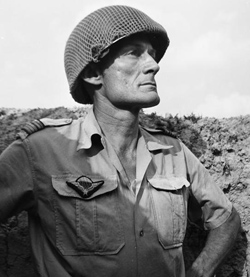
A
few words about Col Pierre
Langlais
Commandant
Langlais arrived in
Indochina
as a Battalion Commander with
the 9th Colot)nial Infantry
Division in October 1945. He returned to
Indochina
for a second two-year tour of
duty in 1949. On his return to France
in 1951, he trained as a
paratrooper to take command of
the 1st Colonial Para-Commando
Demi Brigade (1 DBCCP)
to train replacements for
Indochina.
In
June 1953, Lieutenant
Colonel Langlais arrived
for his third
Indochina
tour to take command of the
Groupement Aéroporté number 2
(
GAP
2). The Airborne Group number
2 was made of
the 1er
Bataillon Etranger de
Parachutistes (1 BEP),
the 8e Bataillon de
Parachutistes de Choc (8
BPC) and
the 5e Bataillon de
Parachutistes Vietnamiens.
Lieutenant
Colonel
Langlais
broke his ankle during the first
parachute jump over Dien Bien Phu in
November 1953 with the Groupement Aéroporté 2
(GAP2). He
was flown out and returned with
his leg in plaster to retake his
command at DBP in early
December. On the 17th March 1954,
he became Commander of the
Central Section of the DBP
complex.
***
The
first
is an account of the
battle viewed by one of
the
DBP Commanders's: Colonel Pierre
Langlais
English
translation of Col Pierre
Langlais book:
Use
the following link provided by the airborneassociation.com
DIEN
BIEN PHU.pdf
This
is an 88-paged pdf book that can
be downloaded and printed if you
wish.
***
The
second
is a book from British Historian
Martin Windrow
"The
Last Valley"
Dien Bien Phu and the French
Defeat in Vietnam
ISBN-10:
0304366927
ISBN-13: 978-0304366927
Available
from book shops or the Internet
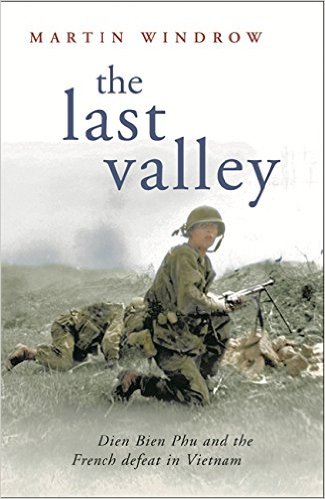
Amazon
book review
This
is an epic book about an epic
battle. It is not often that
the story of a struggle as
dramatic as Dien Bien Phu is
told with a flair that matches
the courage of the adversaries
and the sheer scale of the
event. Martin Windrow's book
is nothing less than a
landmark in military history.
(Professor Richard Holmes)
This is an outstanding work of
military history. It tells the
story of the ghastly French
experience in Indo-China in a
way that has never been done
before in English. The account
of Dien Bien Phu is a
masterpiece of meticulous
historical narrative (Max
Hastings)
Success in battle, according
to one military maxim, may
not, on its own assure the
achievement of national
security goals, but defeat
will guarantee failure. Mr
Windrow's vivid and
well-written account confirms
that this was certainly not
the case at Dien Bien Phu in
1954. His book is a tribute to
his abilities both as a
historian and a writer. (THE
ECONOMIST)
It is hard to praise to highly
Martin Windrow's account, the
first work of a historian who
obviously possesses great
gifts. It is surprising how
many writers who describe
battles lack any understanding
of tactics and technology.
Windrow is master of every
detail... His book makes
gripping reading. I hope he
writes a lot more. (Max
Hastings THE SUNDAY
TELEGRAPH)
This anniversary
reconstruction of France's
most traumatic post-war
battlefield defeat is highly
opportune... Martin Windrow
has pulled off a remarkable
feat. (SUNDAY TIMES)
Enthralling...Windrow gives a
clear and cogent analysis of
the general politico-military
position, one that makes the
fateful decision to invite a
Viet Minh attack on Dien Bien
Phu understandable... Anyone
who found Stalingrad absorbing
will find this book equally
so. Like Beevor, Windrow gives
one the very essence of
battle... His character
sketches of individuals from
commanding officers down, are
deft and accurate... This book
is a wonderful account of a
terrible battle... (Alan
Massie LITERARY REVIEW)
Martin Windrow's The Last
Valley is the vividly told
story of a miniature
Stalingrad in which 10,000
French troops were besieged by
a large army of Viet Minh for
fifty-seven days, fifty years
ago. (HISTORY TODAY)
...Dien Bien Phu, as Martin
Windrow's moving and judicious
account of the battle and of
the two armies that fought it
shows, was not at all a
straightforward clash between
the French and Vietnamese...
Windrow tells it with great
lucidity and humanity, with
vivid portraits of the leading
French officers, and... a very
fair assessment of the
internal dramas of Dien Bien
Phu... he also offers asides
on weaponry, battlefield
medicine, morale... which are
among the best elements of
this good book. (Martin
Woollacott THE GUARDIAN)
***
Dien Bien
Phu prisoners

Photo
from Google search, taken by
Russian photographer
It would not be an
exaggeration to say that the
Viet Minh prison camps in
Indochina were
equal if not worse than the German or
Soviet prison camps during
World War II.
One in four Dien Bien
Phu prisoners will not return
alive from their four months in
captivity.
The Viet Minh captured 11,721
men. The badly-wounded were
looked after by the
Red Cross. The remaining 10,863
were taken as prisoners. Only
3,290 of them were repatriated.
Also, there is no record as to what
happened to the Indochinese who
helped and fought with the French
during the battle.
***
Some
more data from an article from
French Maj Turellier
who spent 5 years 6 months as a prisoner of the
Viet Minh
A
total of around 36,979
prisoners were taken by the
Viet Minh during the war.
10,
754 were released and 26,225
died in camps or on the
roads, which amounts to 71%
of deaths .
The
DBP prisoners mortality rate
was, on average, 72% in four
months.
The
Viet Minh prisoner camps
numbers 42 and 113 were the
most deadly. They were
simply
extermination
camps, a grim reminder of
the WWII German camps.
At
camp number 42, out of 400
Dien Bien Phu prisoners,
only 73
came
out after four months.
That equates to 82% of
deaths.
Article/Study
in French byMaj Turellier -
pdf download link below
http://www.atdm34.net/images/stories/souvenirs/Maj_Turelier.pdf
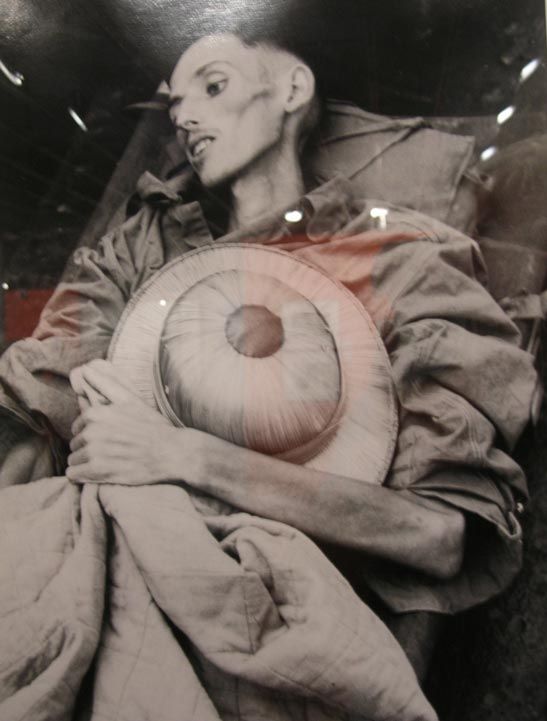
Photo
from Pinterest, author unknown
|